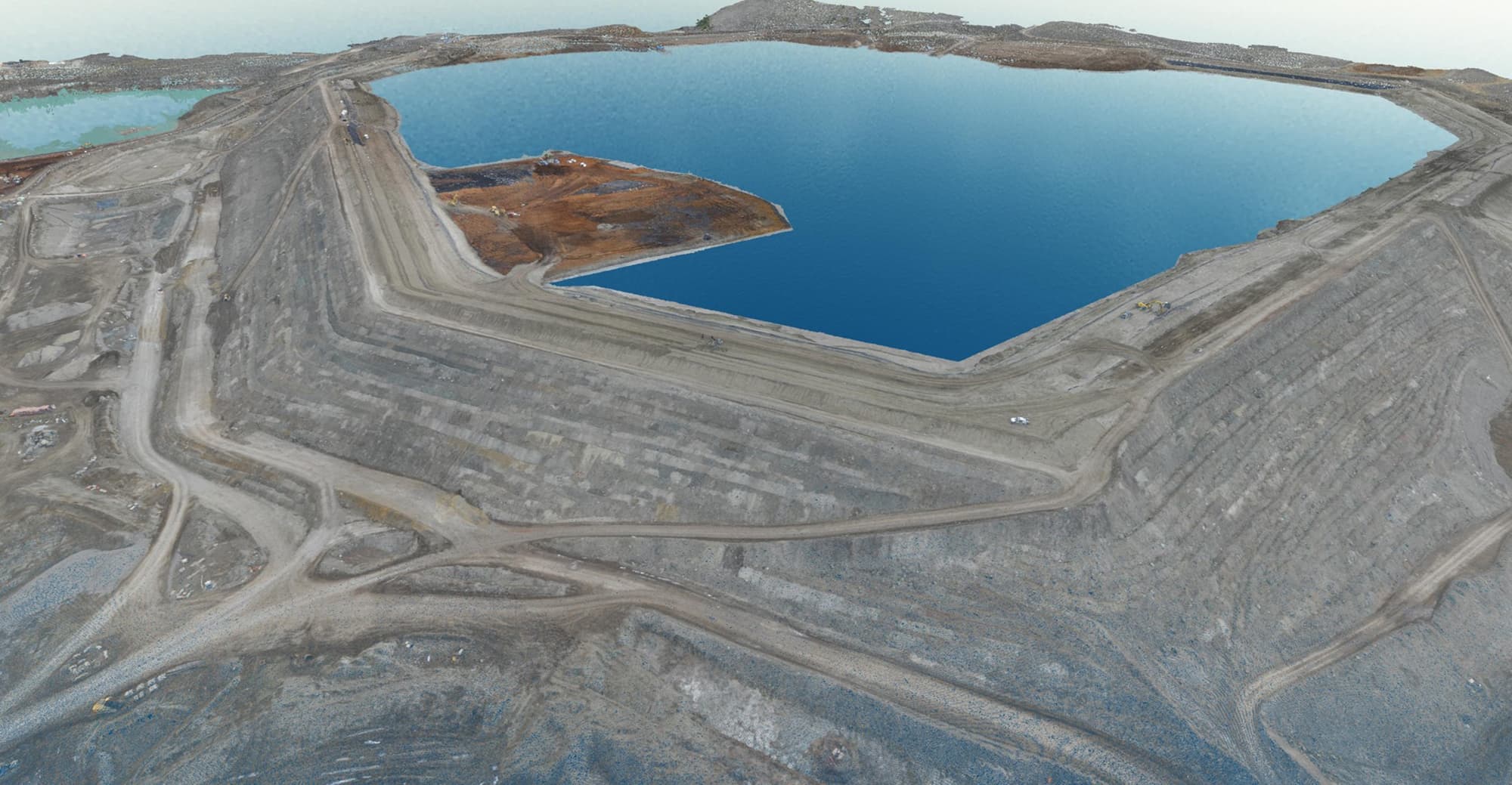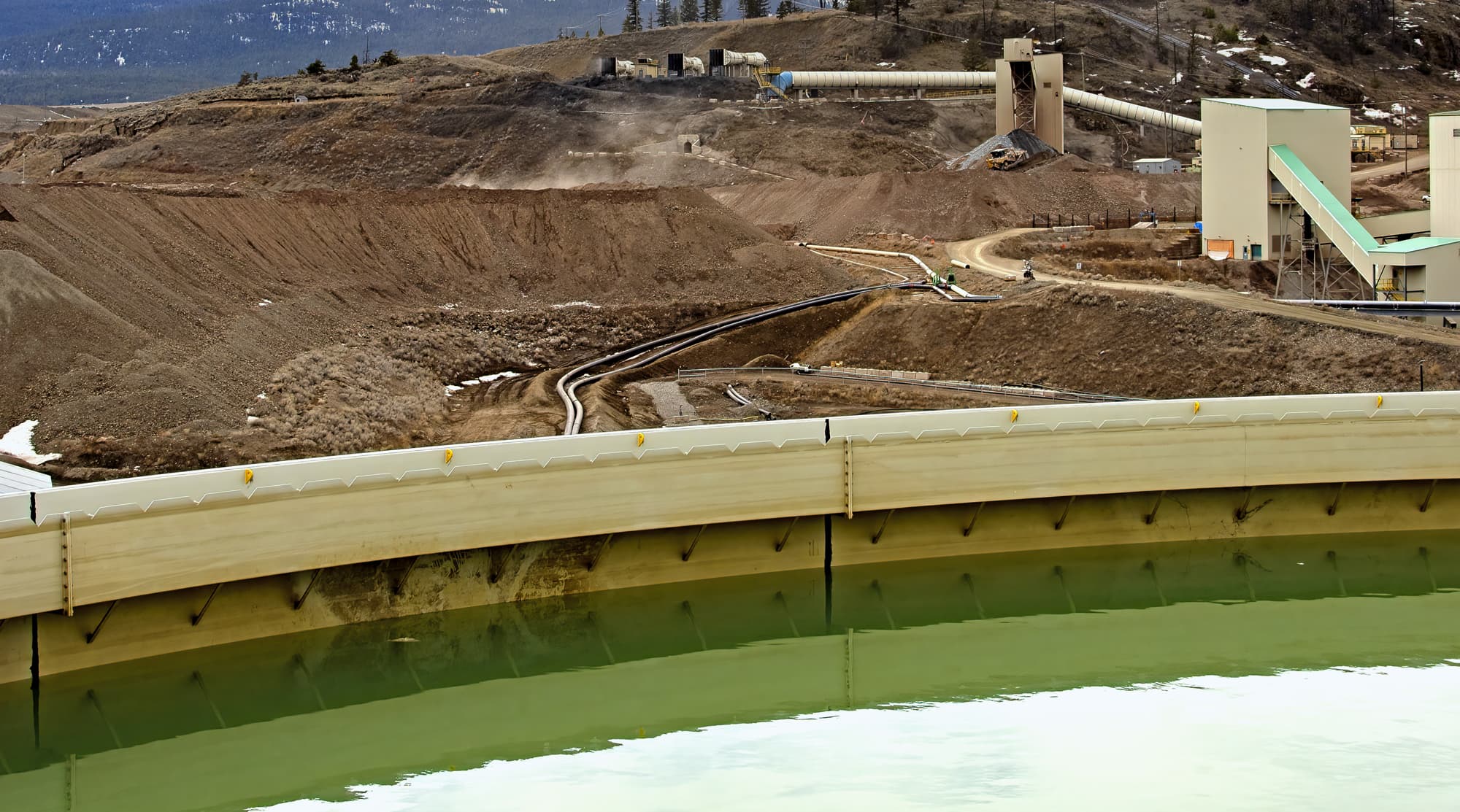
Forging the Path Forward
2022 ESG Report
Environmental
New Gold’s Tailings Facilities
New Gold’s operating sites—New Afton and Rainy River—have a total of three active tailings facilities, in addition to an inactive tailings facility at New Afton. More information about these tailings facilities can be found below.

Tailings Management at New Gold
New Gold’s tailings management practices include the following important features:
| FEATURE | DESCRIPTION |
|---|---|
| Design | The designs for New Gold’s tailings facilities are reviewed and updated throughout the construction and operations phases and include considerations for closure of each facility. The design of tailings facilities takes into account the climatic and ground conditions at each site. For example, our tailings facilities are designed to consider significant natural events, such as the probable maximum flood, so that the facilities are safe in the event of extreme weather or seismic events. |
| Financial security | Each site maintains financial security for the closure and post-closure monitoring of its tailings facilities. The financial security is based on approved closure plans, which are developed with stakeholder input. |
| Operations practices | Each site has an operations, maintenance and surveillance manual (OMS Manual), which sets out, among other things, how the site’s tailings facilities will be operated and maintained to ensure that they function in accordance with their respective design performance objectives, as well as regulatory and corporate policy obligations. |
| Risk assessments | Each site conducts regular risk reviews that include tailings-related risks, the key results of which are reported to corporate management at least annually. |
| Engineer of Record | Each site has appointed a qualified external professional engineer and their firm to be the Engineer of Record for its tailings facilities. |
| Surveillance technology | Sites use surveillance systems, such as piezometers, inclinometers, remote sensing and other technologies to monitor tailings dams and water levels. The OMS Manual sets out early-warning trigger and alert levels, facilitating early identification and management of potential dam stability concerns. |
| Inspections by employees | The Company’s tailings facilities are regularly inspected by trained New Gold employees—sometimes as frequently as several times a day. |
| Dam safety inspections | Formal dam safety inspections are conducted at least annually by the Engineer of Record. Recommendations made by the Engineer of Record are tracked to ensure follow-through by all employees. |
| Dam safety reviews | Each facility is subject to detailed third-party external dam safety reviews every five years, comprising a review of the design basis, construction and performance. |
| Independent reviews | The Company has an ITRB to provide independent, expert advice regarding the technical aspects of our tailings facilities. The ITRB meets at least twice per year to review information about tailings management practices at each facility. |
| Emergency preparedness | Each site has a detailed Emergency Response Plan, which is regularly reviewed and updated. The plans are also tested by employees to ensure response measures are effective and applicable. |
Tailings Facilities Details
| NEW AFTON | RAINY RIVER | ||||
|---|---|---|---|---|---|
| New Afton Tailings Storage Facility (NATSF) | Pothook Pit Tailings Storage Facility (PHTSF) | Historic Afton Tailings Storage Facility (HATSF) | Afton Pit Tailings Storage Facility (APTSF) | Tailings Facility | |
| Tailings facility | NATSF consists of five starter dams that have now joined into one continuous structure. All dams reached their ultimate height in 2021. | PHTSF consists of one dam. The TSF is primarily used for tailings deposition during upset mill conditions. | HATSF consists of two dams. Construction ceased in 1991. | Open pit | TMA West Dam 5, TMA South Dam and Dam (internal); TMA North Dam, TMA West Dam 4 and TMA South Dam |
| Location | 50.648308° N, 120.509096° W | 50.653656° N, 120.501666° W | 50.65000° N, 120.533333° W | 50.66129° N, 120.5127° W | 48.869052° N, 94.060457° W |
| Construction method | Downstream and centreline | Downstream | Downstream | Open pit backfill | Centreline raises for the TMA perimeter dams, which include TMA South Dam, TMA West Dam and TMA North Dam |
| Design standard | CDA’s Dam Safety Guidelines | CDA’s Dam Safety Guidelines | CDA’s Dam Safety Guidelines | CDA’s Dam Safety Guidelines | CDA’s Dam Safety Guidelines, Ontario Mining Association |
| Status | Active | Active | Under maintenance and care | Active | Active |
| Current maximum height | 56 m | 10 m | 70 m | Open pit | 24 m at South Dam |
| Current storage impoundment volume | 32.4M m³ | 2.5M m³ | 27M m³ | 0.2M tonnes | 32M m³ |
| Most recent dam safety inspection | October 2022 | October 2022 | October 2022 | October 2022 | June 2022 |
| Most recent dam safety review | 2017 1 | 2017 1 | 2018 1 | The APTSF is a retrofitted open pit. It officially became a tailings storage facility in 2022. Reviews will be held every five years with the next in 2027. 2 | June 2021 |
| Most recent ITRB and tailings review | October 2022 | October 2022 | October 2022 | October 2022 | October 2022 |
| Hazard potential 1 | Extreme 3 | Very High 3 | Extreme 3 | High 3 | Extreme 3, 4 |
1 As agreed with all relevant Ministries, New Afton will complete the dam safety review for NATSF, PHTSF and HATSF in 2023 on account of the third party review of the C-Zone stabilization design conducted in 2022..
2 Dam safety reviews are required every 5 years after start up of the facility. All regulatory requirements to permit and commence deposition in the APTSF have been completed in 2022. Monthly quantifiable performance objective and trigger action response plan reviews are performed.
3 In accordance with CDA Dam Safety Guidelines, Table 2-1 Dam Classification. Dam classification considers the risks posed by the structures, such as the population at risk and incremental losses—loss of life, environmental and cultural values, and infrastructure and economics.
4 Using the Ontario Lakes and Rivers Improvement Act (LRIA) “Using the Ontario Lakes and Rivers Improvement Act (LRIA) “Classification and inflow design flood criteria.” This is generally equivalent to a CDA consequence of Extreme.
MAC TSM Tailings Management Protocol Indicators
In 2022, New Afton self-assessed AAA scores on all five indicators and Rainy River achieved three A scores on it’s external verification.
